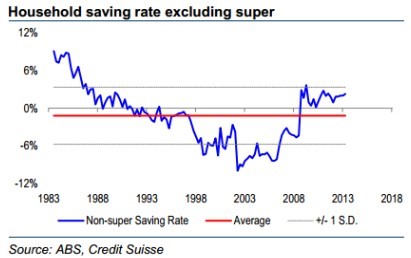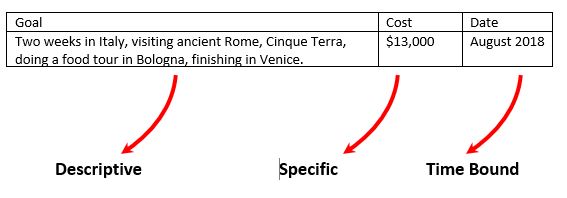How To:
Create a Budget that Works
Save Money and Take Control of Your Financial Future
Author: Matt Boxer
Published :05/04/2016
For a lot of people, an inability to save is not a result of a lack of a budget. The sad truth is that a budget on its own does not work. This article goes through how to create a savings strategy rather than a budget. I have seen this strategic process work hundreds of times in my decade as a professional financial planner.
As a financial planner, I am required to give you this warning. This is not personal advice to implement a strategy or buy a specific product. It does not take into account your personal circumstances and is general advice (information) only.

"A Budget on its own DOES NOT WORK"
Step 1: Work Out Your Goals
Why do you want to save money? Don’t underestimate the importance of establishing your goals. Most people fail to save money because of motivation.
The ultimate key to motivation is to understand specifically what you are saving for.
According to Gary Latham and Marie-Hélène Budworth, in their 2007 work “The Study of Work Motivation in the 20th Century”, setting goals affects outcomes in four ways:
Choice: goals narrow attention and direct efforts to goal-relevant activities, and away from perceived undesirable and goal-irrelevant actions.
Effort: goals can lead to more effort.
Persistence: someone becomes more likely to work through setbacks if pursuing a goal.
Cognition: goals can lead individuals to develop and change their behaviour.
What is an effective goal?
When setting goals that motivate you, you have to differentiate between a goal and a strategy. Going on holiday is a goal. Buying a rental property is a strategy. There is a goal there, but you have to dig a little deeper. Why do you want to buy a rental property? Is it that you hope it will mean you can stop work at age 60? Is it that you hope it will mean that you can have $40,000 a year in passive income in retirement? The goal here would then be to retire at age 60 with $40,000 a year. Another example of this might be to have $20,000 in a bank account. Not particularly motivating. Why do you want that? So you don’t lose sleep if your car starts making a funny sound? Again, $20,000 cash in the bank is a strategy to achieve peace of mind from unexpected expenses, rather than a goal itself.
Further, the more specific the better. Where do you want to go on holiday? When? How much will it cost?
The difference might seem subtle, but a good goal creates a vision in your head. It engages the subconscious by automatically attaching pleasure or pain to the achievement of the goal.
Your actions will change when the pleasure of achieving that goal, or the pain of not achieving that goal, is larger than the pleasure or pain regarding short term, often unnecessary, expenditures.
Step 2: Create A Real Budget
When people tell me that they have a budget, what they actually have is a pipe dream of the minimum they think they can spend on their core expenses. They often only include a “budget holiday”, “budget groceries” and “budget clothing”. Unfortunately, the verb budget and the adjective budget mean very different things. By focusing on budget (adjective) items, you are not creating a useful budget (verb).
What you need to create is something better described as an income and spending plan.
A good budget (or income and spending plan) will have the following:
- Income for comparison against expenses
- A comprehensive list of categories of planned expenditure. This list should include day to day stuff like dining and entertainment, but also intermittent spending like home maintenance or appliances.
- An overestimation of expenses that represent the lifestyle you would like to have relative to your income. This can then be balanced against your desire to achieve your longer term goals (we will get to this in more detail).
- A place for tax deductible expenditures so that the tax on your income can be correctly calculated.
- A calculated number that represents your savings capacity or cash flow surplus (difference between income and expenses).
- The ability to do scenarios. What happens to your budget if interest rates rise? If you start a family? If you purchase an investment? If you increase your debt to fund renovations?
I have a specific template that I have developed over a number of years. If you would like a copy, please send me an e-mail and I will forward one through to you.
Step 3: Get Motivated
In Step 1 we talked about the motivation that goals create. Now you need to tie this to your budget.
To start, take your list of goals and work out how much you are going to need to save per year to make them a reality.
Does this line up with your cash flow surplus?
If it does – congratulations. You can move to Step 5.
If (like 90% of people) it does not, then you have some decisions to make. Typically, you will have to choose one or more of the following:
- Earn more
- Spend less
- Sell an asset
- Reduce your goals
- Discuss with a financial planner strategies to improve your cash flow and long term wealth
A quick plug for my services here: Obviously I would be happy to hear from you if you would like to have a chat about what options you have might here. I don’t charge anything unless I am creating a plan that will have some tangible net benefits (one that creates more money than it costs).
The outcome you are looking for, in all of this, is agreeing with yourself (and perhaps your partner or adviser) about the priorities and balance between current lifestyle spending vs future lifestyle spending (your goals).
Can you say something like this? “If I can keep my grocery bill and dining out costs week to week to under $xxx, then I will be able to go to Venice, Italy in 2017.”
Do you see the difference? There will come a point in time where your spending plan faces a challenge. At this time you will have a choice. You either blow the budget…. Or you choose not to. It’s a lot harder to overspend if you think it is going to mean that you miss out on the trip to Italy.




